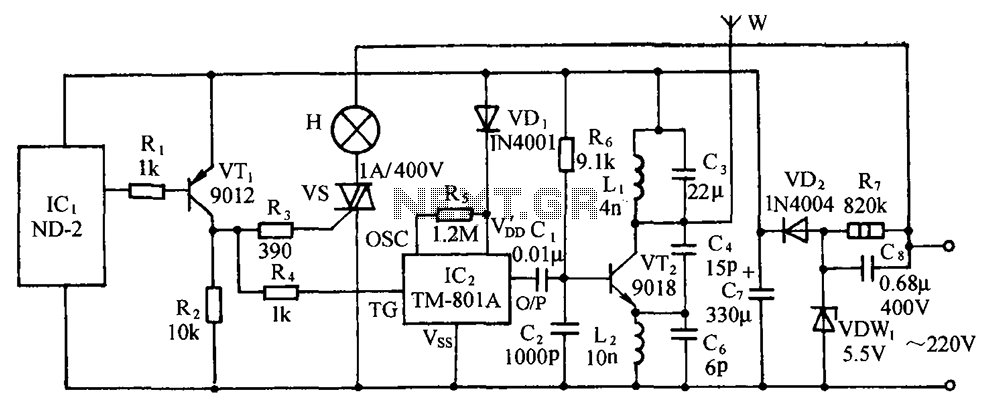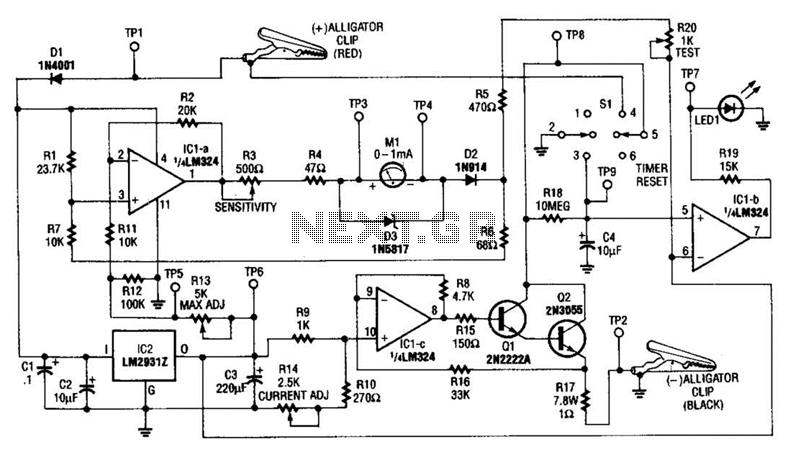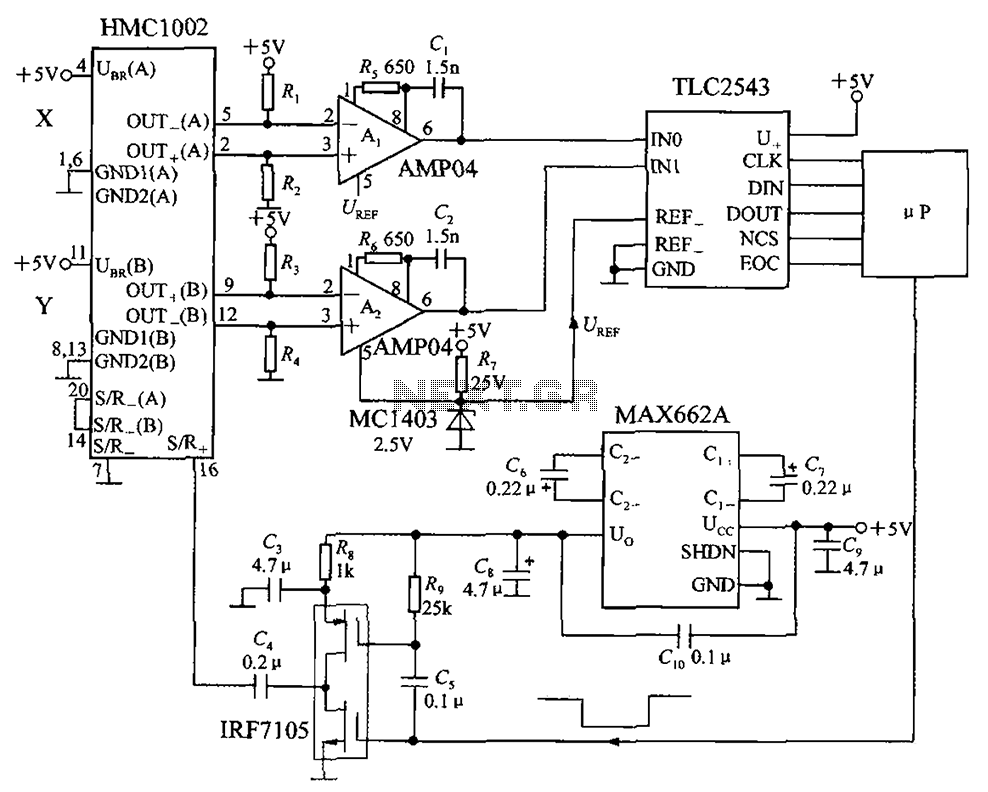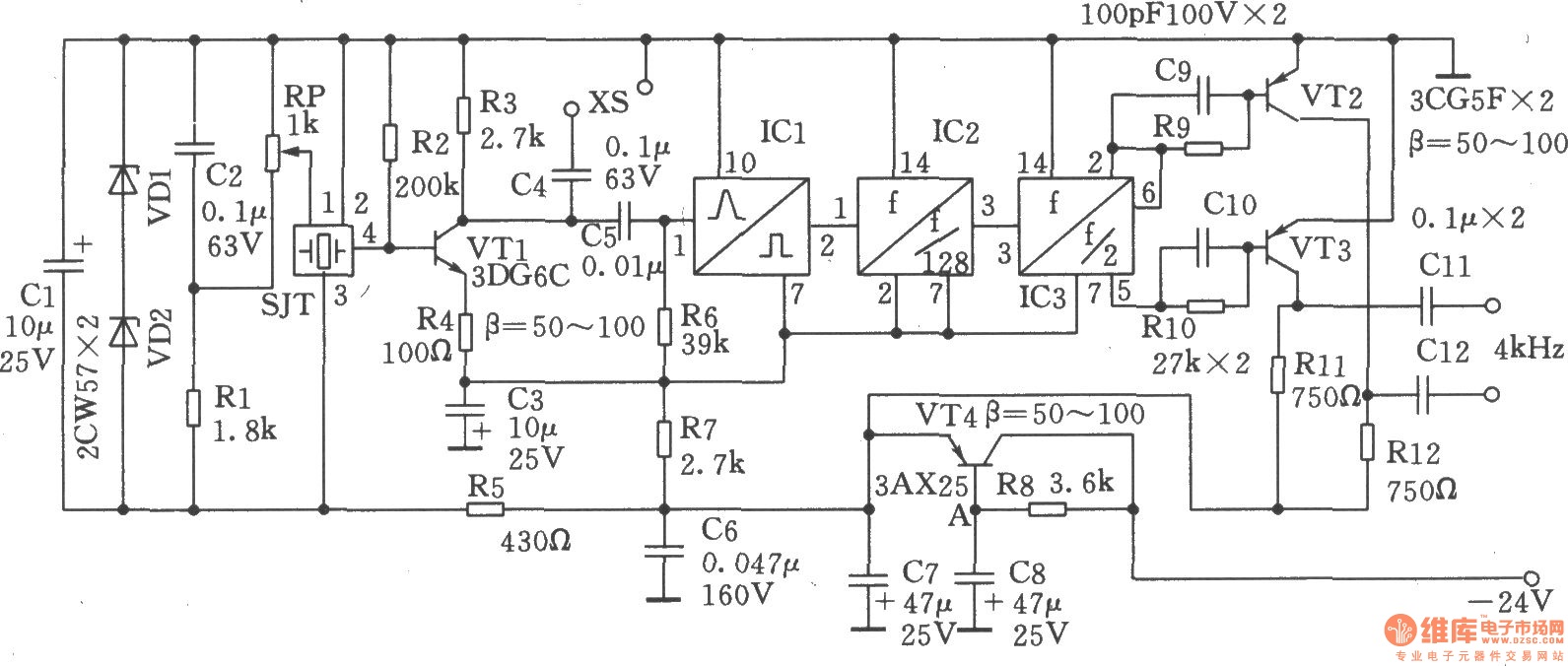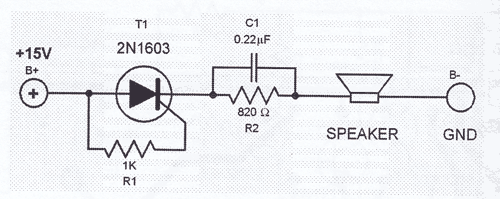
Active Second-Order Bandpass Filter Circuit

This filter circuit, which utilizes the LM1458 or a similar operational amplifier, has a frequency response ranging from 300 Hz to 3.4 kHz, exhibiting a roll-off of 12 dB per octave outside the passband. Section A serves as the high-pass filter, while Section B functions as the low-pass filter. The values of either section can be adjusted to modify the passband.
The described filter circuit is a two-stage active filter design that employs the LM1458 operational amplifier, known for its low noise and high performance in audio applications. The high-pass filter section (Section A) is configured to allow frequencies above 300 Hz to pass while attenuating lower frequencies. This is typically achieved by using a capacitor in series with the input signal, which blocks DC and low-frequency signals, and a resistor that sets the cutoff frequency in conjunction with the capacitor.
Following the high-pass section, the low-pass filter (Section B) is designed to permit frequencies below 3.4 kHz to pass, while attenuating higher frequencies. This section generally consists of a resistor and capacitor in a feedback loop configuration that defines the cutoff frequency. The integration of both sections results in a bandpass filter, allowing signals within the specified range of 300 Hz to 3.4 kHz to be amplified while reducing unwanted frequencies outside this range.
The roll-off characteristic of 12 dB per octave indicates that for every doubling of frequency beyond the cutoff points, the signal amplitude is reduced by 12 dB. This characteristic is essential in applications where precision in frequency response is vital, such as in audio processing and filtering applications.
The ability to scale the component values in either section provides flexibility in tuning the filter to meet specific requirements. By adjusting the resistor and capacitor values, the cutoff frequencies can be shifted, allowing for customization of the filter’s response to suit various signal processing needs. This adaptability makes the circuit suitable for a wide range of applications, including audio signal processing, communication systems, and instrumentation. This filter circuit which uses LM1458 or similar op amp has a response of 300 Hz to 3.4 kHz with 12 dB/octavc roll-off outside the pass band. Sqction A is the high-pass one, followed by low-pass section B. Values of-either section can be scaled to alter the pass band. 🔗 External reference
The described filter circuit is a two-stage active filter design that employs the LM1458 operational amplifier, known for its low noise and high performance in audio applications. The high-pass filter section (Section A) is configured to allow frequencies above 300 Hz to pass while attenuating lower frequencies. This is typically achieved by using a capacitor in series with the input signal, which blocks DC and low-frequency signals, and a resistor that sets the cutoff frequency in conjunction with the capacitor.
Following the high-pass section, the low-pass filter (Section B) is designed to permit frequencies below 3.4 kHz to pass, while attenuating higher frequencies. This section generally consists of a resistor and capacitor in a feedback loop configuration that defines the cutoff frequency. The integration of both sections results in a bandpass filter, allowing signals within the specified range of 300 Hz to 3.4 kHz to be amplified while reducing unwanted frequencies outside this range.
The roll-off characteristic of 12 dB per octave indicates that for every doubling of frequency beyond the cutoff points, the signal amplitude is reduced by 12 dB. This characteristic is essential in applications where precision in frequency response is vital, such as in audio processing and filtering applications.
The ability to scale the component values in either section provides flexibility in tuning the filter to meet specific requirements. By adjusting the resistor and capacitor values, the cutoff frequencies can be shifted, allowing for customization of the filter’s response to suit various signal processing needs. This adaptability makes the circuit suitable for a wide range of applications, including audio signal processing, communication systems, and instrumentation. This filter circuit which uses LM1458 or similar op amp has a response of 300 Hz to 3.4 kHz with 12 dB/octavc roll-off outside the pass band. Sqction A is the high-pass one, followed by low-pass section B. Values of-either section can be scaled to alter the pass band. 🔗 External reference

